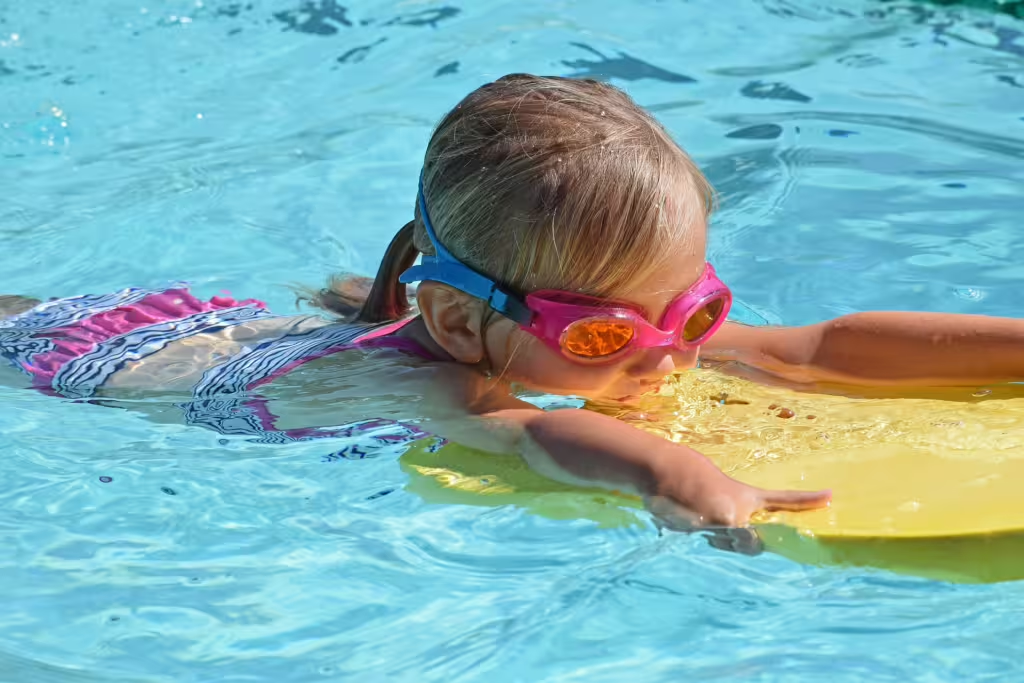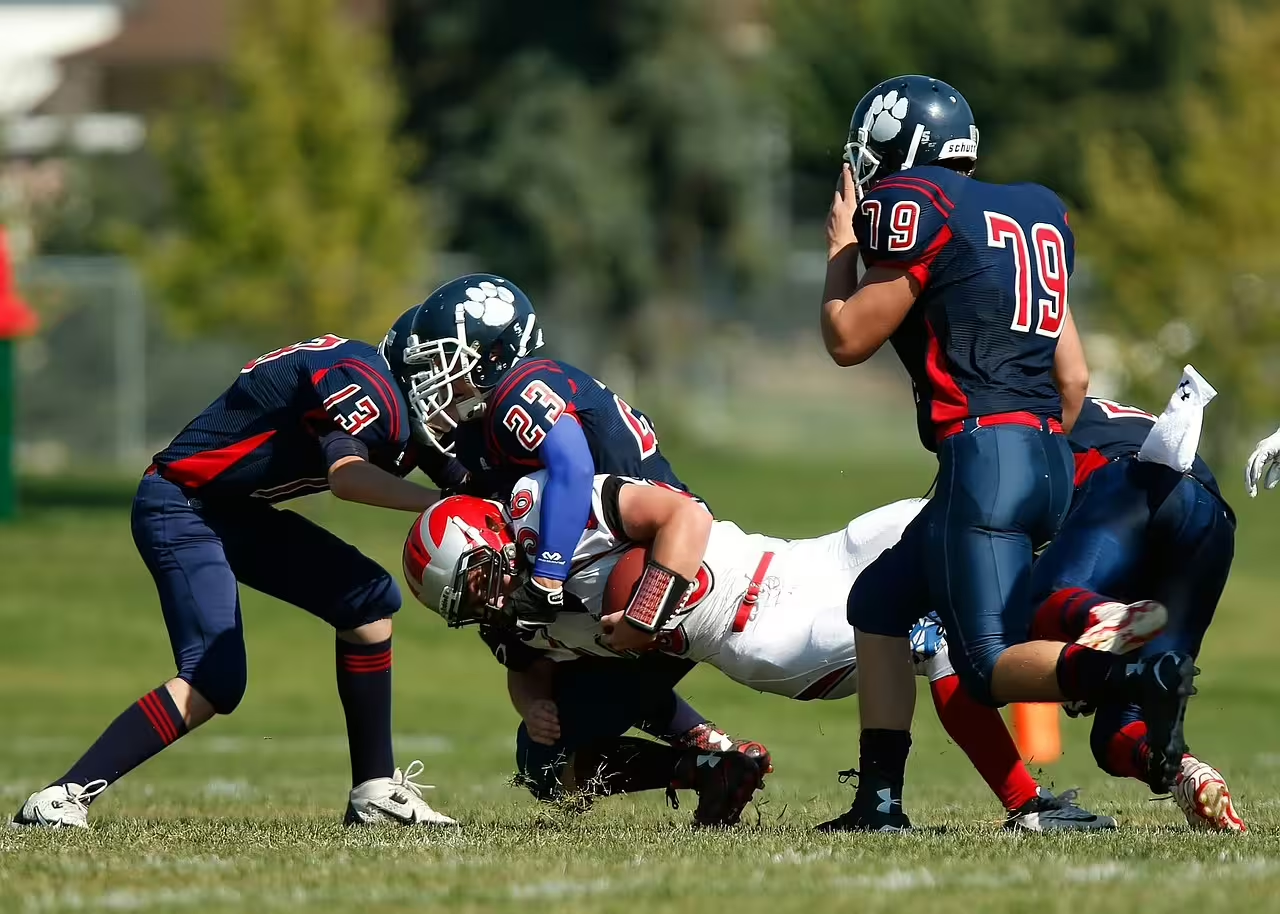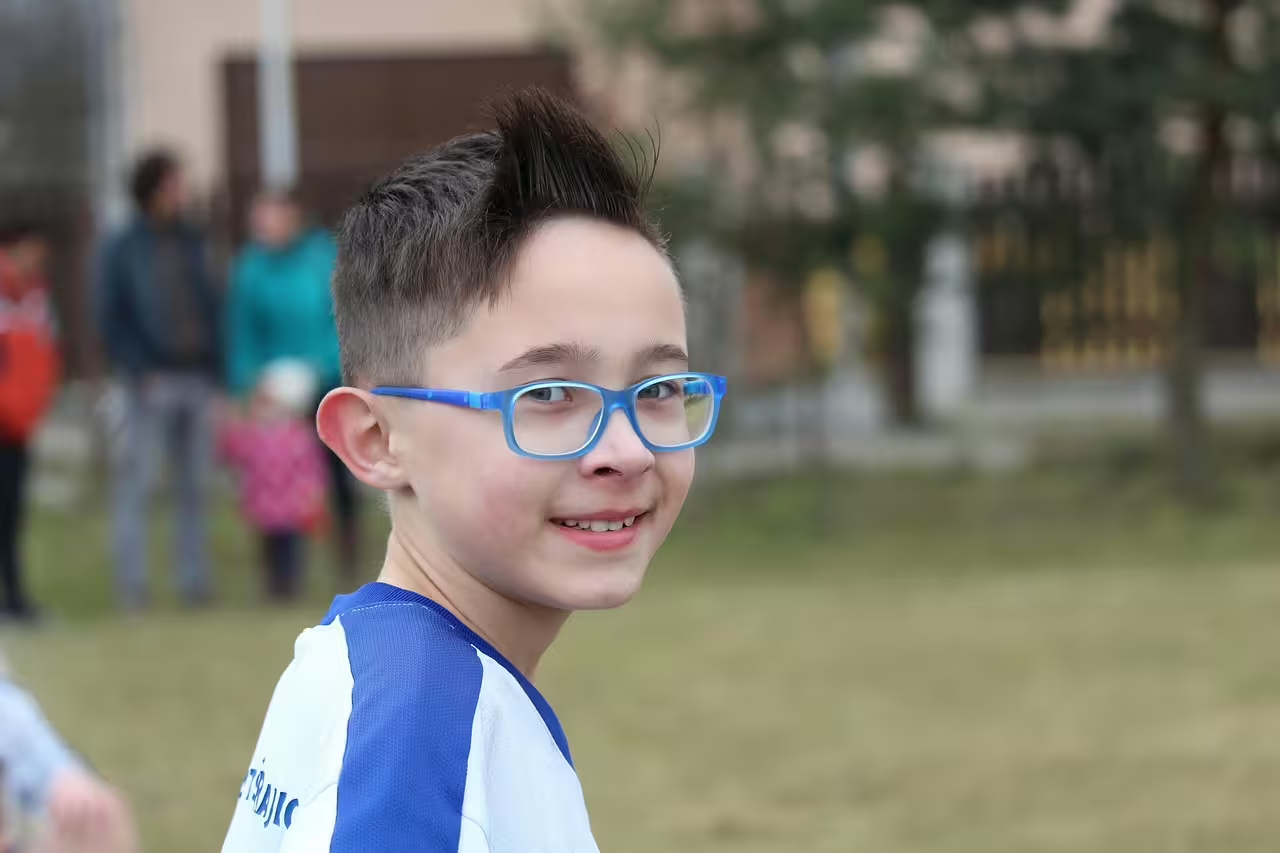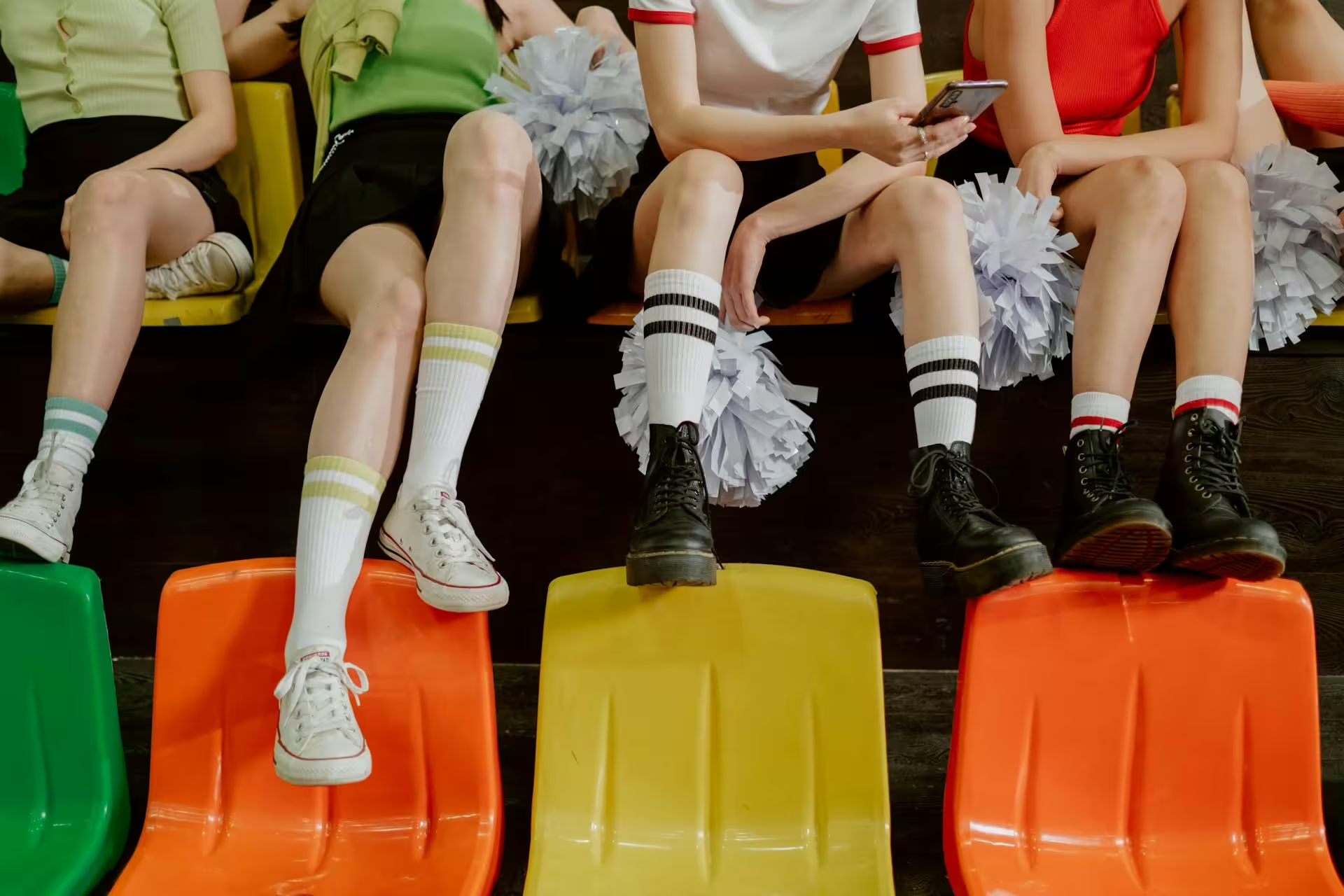With summer just around the corner, it’s no surprise that many parents are already thinking about the start of swim season. Those who have kids in school programs that have indoor swimming, will likely have been prepped and ready throughout the colder months, but for many, the advent of summer means a return to the pool or ocean for their kids.
At Cultured Athlete, we have always been very up-front about the benefits of swimming. We understand and have advocated it as a vital life skill that all children should learn for their own safety. That said, we also understand that swimming can be a rewarding sport that supports lifelong health, discipline, and confidence in young athletes.
For many young swimmers, the basic skills are easy enough to master, but for those looking to do it in a more competitive capacity, developing endurance is just as important. Indeed, good endurance in the water is often considered a solid foundation for long-term success and enjoyment. Thus, whether your child is just learning to swim or already part of a swim team, helping them build endurance gradually and safely will set them up for success. They will be successful in their performance and in their personal growth.
In this article, we will help parents to do just that; teach their children how to have better endurance in the water. We will explore why endurance matters, teach parents how to recognize readiness for longer distances, and offer you and your children a step-by-step guide that can help with one’s swimming development. Throughout the article, you’ll also find tips on technique, motivation, and managing setbacks along the way. Without further ado, let’s dive right in, shall we?
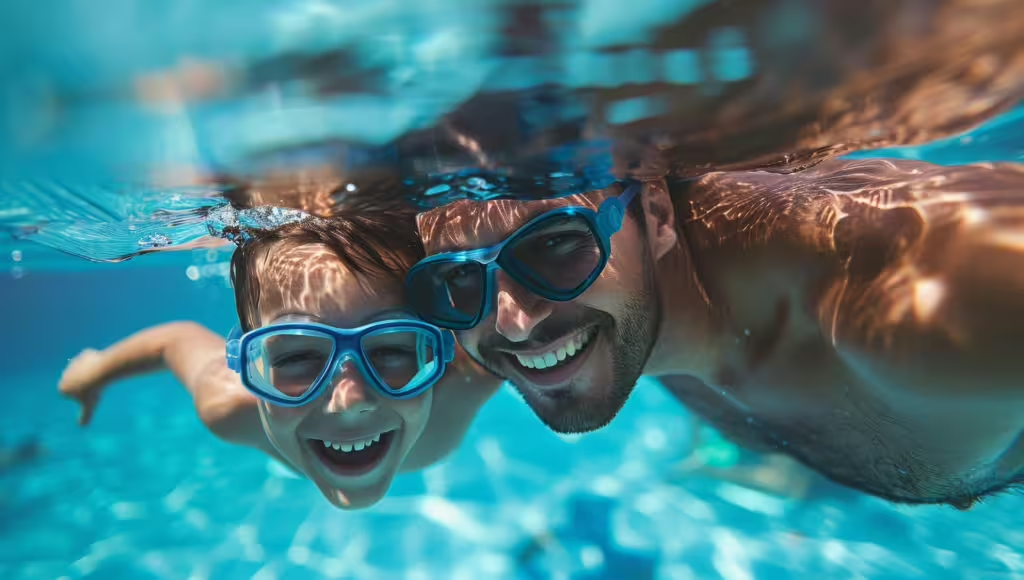
Why Endurance Matters in Youth Swimming
Those who have not had much swimming experience in terms of sport or even those whose main experience in the water involves a placid swimming pool, may not immediately understand why endurance is so vital to a swimmer’s success. The thing is, swimming endurance isn’t just about how far a child can swim without stopping—it’s about strength, stamina, breathing control, technique, and mental resilience. Building the right about of endurance gives young swimmers:
- Improved cardiovascular health
- Greater muscle strength and efficiency
- Confidence in deep water and longer swim events
- Focus and discipline from structured training
- Increased enjoyment and participation
At the same time, solid swimming endurance is also a key piece of preventing injury. Children who gradually build their stamina with proper technique are less likely to experience muscle strain or overuse issues in the water.
Understanding Your Child’s Starting Point
Every swimmer is different, just as every child is different. This is why, before beginning any endurance plan, it’s important for parents to assess where their child currently stands (swims?) in terms of skill level and confidence.
Parents, Ask Yourself:
- Can my child swim one full pool length without stopping? Note that this is usually around 25 yards.
- Is my kid comfortable putting their face in the water and breathing to the side?
- Can my child maintain a consistent pace for at least 1–2 minutes?
- Does my kid show interest in swimming longer or joining a team?
If your child is still developing the most basic water comfort or even the easiest swim strokes, it might be time to take a step back and reassess the situation. Try and focus on lessons that improve water safety and technique before adding any endurance training into the mix.
How to Gradually Increase Swimming Distance
Like any physical activity, endurance in swimming is only going to improve with repetition and progression. Below, we have included a step-by-step approach for parents that can help them guide their child’s development.
Step 1: Prioritize Technique First
Before increasing the number or frequency of laps, make sure your child has solid technique. Swimming with poor form not only wastes energy but can lead to injury or frustration. When coaching for technique try and focus on:
- Proper body position (horizontal and streamlined)
- Smooth arm strokes
- Efficient kicks
- Consistent breathing pattern
Note to Parents: Swimming slower with correct form is more beneficial than powering through extra laps using bad habits.
Step 2: Start with Short, Structured Sets
Do what you can to break up total swim time into manageable sets. Some examples of these sets can be found in the section below:
- 4 x 25 yards with 20–30 seconds rest in between
- 3 x 50 yards with kickboard focus
- 2 x 25 yards backstroke to work different muscle groups
Note to Parents: These might seem unnecessary to some parents, but for those trying to improve their kid’s swim game, these sets teach children how to manage effort and recovery while staying focused on the task.
Step 3: Use Interval Training
As your child’s swimming skill and endurance level improve, you can begin to introduce interval swimming. This type of swimming involves using a set distance multiple times at a consistent pace, with timed rests in between. Some example include:
- 5 x 50 yards freestyle, 15 seconds rest between each
- 4 x 100 yards freestyle, 30 seconds rest
Note to Parents: Tracking time and effort adds structure and motivation to practices and is especially helpful for kids with an eye towards higher, more competitive levels of swimming.
Step 4: Gradually Add Volume Each Week
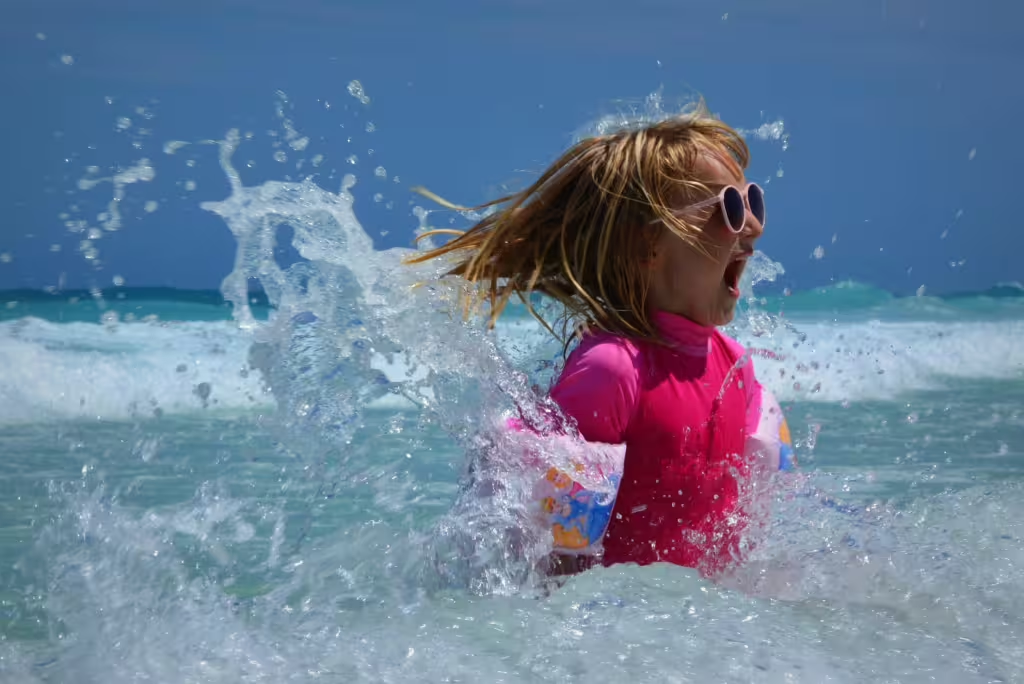
Endurance in any sport is built up by consistent, incremental increases in distance or duration. A good rule to follow, in general is not to increase total swimming volume by more than 10% per week. This rule is dual-purpose, it prevents burnout and potential overuse injuries.
Some example of these endurance interval an increases include:
- Week 1: 400 yards total swim
- Week 2: 440 yards
- Week 3: 500 yards
Tips to Keep Kids Motivated
Endurance training can be tiring. Yes, even the most motivated young athletes will eventually succumb to the sheer exhaustion that comes from trying to build up one’s stamina. Fortunately, we have a few ways that parents can use to help keep swimming fun and engaging:
Turn Workouts into Games
Parents can use pool toys, basic challenges, or relays to add variety to their child’s practice. For younger swimmers, try:
- “Shark and Minnows” is a great way to get an active warm-up
- Counting how many strokes it takes to get across the pool
- Timed treasure hunts with dive sticks
Use Visual Goals
You can track your child’s progress on a chart or poster at home. Believe it or not, most kids love seeing their improvements in a visual way. Mark milestones like:
- First 100-yard swim without stopping
- Beating a personal best time
- Completing a swim meet event
Reward Effort, Not Just Achievement
Above all else, remember to celebrate hard work, consistency, and keep your attitude positive. Verbal praise, stickers, or a special treat can go a long way towards getting the job done.
Balancing Endurance with Technique and Fun
Bear in mind that endurance doesn’t exist in a vacuum. What we mean is, building stamina should never come at the expense of technique or enjoyment. For younger children (ages 5–8), about 70% of pool time should focus on skill-building and fun, with 30% on endurance.
For older kids, those 9 and older, especially those in swim teams or clubs, that balance may shift to 50/50 or more endurance-focused, but this all depends on the child’s individual goals.
Remember:
- As we touched on earlier, short bursts of quality swimming are better than long sessions with declining form.
- Parents will want to encourage rest between sets to keep energy high and reinforce technique.
- Don’t be afraid to switch things up if you need to. Adjust the plan based on how your child feels each day. The point here is that flexibility prevents frustration for all parties involved.
Signs of Overtraining or Burnout
Like all young athletes, the swimmers we are speaking about here are all still growing, and too much physical strain can be harmful for their bodies. If you aren’t sure what indicators can tell you this, here are a list of signs that your child may need a break or a modified routine:
- Complaints of persistent fatigue or muscle soreness
- Irritability or loss of interest in swimming
- Trouble sleeping or changes in appetite
- Frequent illnesses or injuries
If you notice any or all of these signs, it’s time to pull back on the swimming lessons. Try and scale back volume or intensity first, then consult with a coach or pediatrician if you feel you need a little additional advice. These professionals see and hear about this stuff all the time, so most will be more than happy to help.
Tools and Equipment That Help Build Endurance
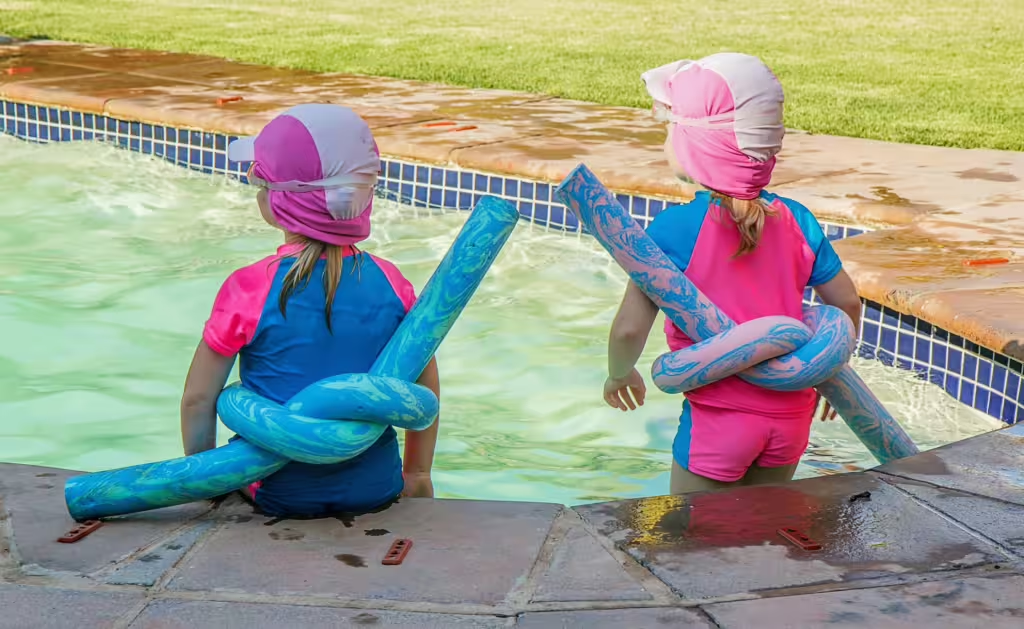
Fortunately, swimming doesn’t really necessitate a whole lot of additional equipment. Moreover, you don’t need a lot of gear to support endurance. Nevertheless, some tools can help:
- Kickboard: This popular item can build leg strength while isolating the lower body.
- Pull buoy: Allows swimmers to focus on arm technique and breathing.
- Swim fins: Help kids to feel faster in the water and build confidence. They can also develop a swimmer’s leg muscles.
- Pace clock or stopwatch: This one is more for you than then, as it’s great for interval training and timing sets.
Note to Parents: Work with your child’s coach or swim instructor to see what gear is appropriate for their age and skill level.
Nutrition and Hydration for Young Swimmers
Of all the physical workouts one can do, swimming is usually at the top. This is because swimming uses nearly all the body’s muscles and so it burns calories quickly, especially during longer workouts. For this reason, proper nutrition is essential, as is proper hydration. Both can help support recovery and enhance stamina.
Before Swimming:
- Give your child a light snack 30–60 minutes before (e.g., fruit, yogurt, toast)
- Avoid heavy meals or sugary snacks right before any workout.
After Swimming:
- Protein-rich foods are a great way to help muscles recover (e.g., turkey sandwich, cheese sticks)
- Carbohydrates are excellent for restoring spent energy (e.g., granola bars, rice)
Note to Parents: Don’t skimp on the water! Swimmers may not feel thirsty in the pool, but hydration is essential to any physical workout!
Adapting for Kids with Special Needs
Believe it or not, many children with sensory, motor, or developmental challenges can benefit from endurance swimming. In fact with a few thoughtful modifications such as:
- Shorter sessions broken into more frequent breaks
- Extra emphasis on routine and repetition
- Visual cues or timers to show progress
- Adapted equipment (e.g., flotation devices or pool ramps)
Note to Parents: Look for swim instructors with experience in adaptive sports can offer a safe, inclusive environment for all children.
Looking Long-Term: Lifelong Benefits of Endurance Swimming
Try and remember, swimming, as in all youth sports, are more about the long game than they are the fleeting victories. As your child builds endurance in swimming, they’re also building healthy habits that will help them throughout their life. Swimming, in general, often becomes a lifelong form of exercise for certain kids; one that’s easy on the joints, refreshing, fun, and adaptable at any age or ability.
Beyond physical health, swimming cultivates a number of positive qualities, including:
- Goal setting
- Persistence
- Self-esteem
- Focus and discipline
Note to Parents: Whether your child goes on to swim competitively or just for fitness, they will undoubtedly carry the lessons of endurance long after they have left the water.
Cultured Athlete Says…
As you can plainly see, endurance in swimming or any sport, is not something that happens in an afternoon. Anyone who has every worked toward something knows that success doesn’t develop overnight. Success, skill, and endurance are built through weeks, months, and even years of consistent effort, encouragement, and positive experiences. As parents, we are well placed to help our children achieve all their goals. We can push hard or put on more and more pressure, but in the end, our role is more about guidance, support, and celebration; or at least it should be.
As always, make sure that you stay connected with coaches, monitor your child’s emotional and physical well-being, and focus on progress over perfection. With the right approach and the proper strategies in place, swimming can become more than a sport for your kids—it can become a joyful, empowering part of their entire life.
Discover more from CulturedAthlete
Subscribe to get the latest posts sent to your email.

